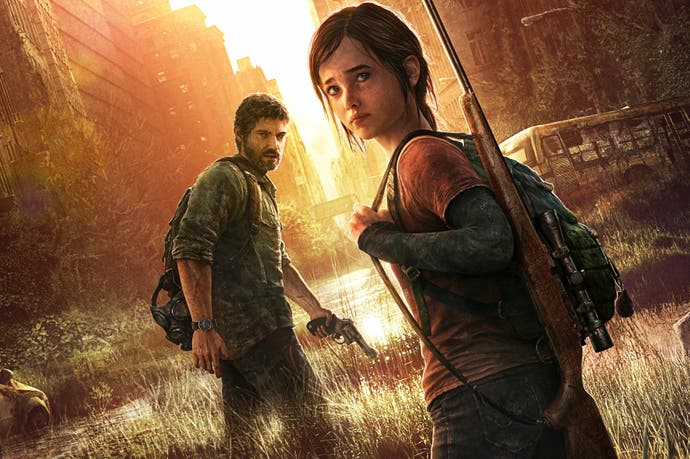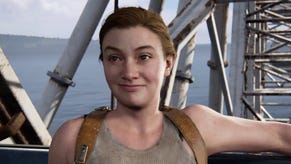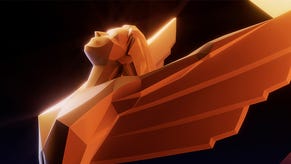In Theory: Could The Last of Us on PS4 run at 1080p60?
Digital Foundry discusses the possibilities in the wake of the shock pseudo-reveal.
"There is no information about a new The Last of Us game but I can share this knowledge; as of this summer, The Last of Us will be on the PS4. Both on PSN and physically," PlayStation's Eurasian Software Market Manager Sercan Sulun told CNN earlier this week. "The PS4 version will also include the DLC so you will be able to play Left Behind as well."
As far as off-piste game announcements go, this one is right up there with the best of them. Sony can't dismiss comments from a high-ranking employee as "rumour and speculation" - because they aren't - but at the same time, simply confirming the news isn't as simple as you might think. The marketing machine behind such a high-profile release just isn't ready. Think back to furore over Tomb Raider: Definitive Edition and it's clear that a deft PR touch is required to launch any prospective PS4 remaster of The Last of Us effectively.
Indeed, the nature of the project, the mooted summer release date, and the fact we hadn't heard anything about it up until this moment all point to a fantastic E3 surprise spoiled in an instant. Imagine the reveal slotted into the line-up as a "one more thing" endnote to Sony's upcoming press conference. It would have been electrifying.
"One of the greatest games of the PS3 era is coming to PlayStation 4 - and you can play it next month".
Instead, what we have is an off-hand, under-baked pseudo-reveal that leaves us with more questions than answers. Yes, bundled DLC is one thing, but what about the game itself? What is it about a prospective PlayStation 4 edition of The Last of Us that makes the exercise worthwhile? The irony is that for all the negativity surrounding Tomb Raider: Definitive Edition, as a template for what could be done to "remake" other last-gen titles, it's actually rather good. The look and feel of the game is totally transformed and we'd rank it as one of the better titles currently available on the PlayStation 4.
Indeed, if The Last of Us on PS4 is as feature-rich as Tomb Raider in terms of visual upgrades, the results should be pretty spectacular - but there is one major point of differentiation. The Lara Croft reboot was built around an engine designed with next-gen scalability in mind, and a great template for the enhanced PS4 release was already in place - the PC version. Square Enix could draw upon a mass of existing work to make its PS4 version look stunning: improved effects, a wealth of additional rendering features, higher quality artwork - plus of course, TressFX hair simulation. Indeed, the whole basis of the Tomb Raider engine was based on scalability; we can be fairly sure that the next-gen console versions were a lock before the initial release and that much of the same tech will be deployed on the sequel.
"The Last of Us is a masterpiece on PlayStation 3, but a PS4 port could clean up the frame-rate issues and improve art quality considerably."
Quite where The Last of Us stands in comparison is unknown. While a 1080p60 port of the existing PS3 game would do just fine for most of us, Tomb Raider really has laid down the gauntlet. Assuming Naughty Dog itself is handling the game (hardly a dead-cert at this point, based on prior Sony remasters), we know that the developer is working to move its existing engine across to PS4, we know that Uncharted 4 is already in development, and it stands to reason that The Last of Us conversion could benefit from that work. But should we expect anything more than a basic conversion?
Principally, the question comes down to when the decision was taken to make The Last of Us a cross-generational release. PlayStation 4 has been in development for a long time, Sony would have been aware of Naughty Dog's timelines and realised that 2014 may have been a fallow year for produce from the studio unless steps were taken to address that - and a The Last of Us port makes excellent business sense. With an eye to a potential PS4 version, the development team could have scaled assets as they were being made.
However, if the port was decided after the PS3 version shipped, the question is really what Naughty Dog (or whoever is producing the port) has to work with. If there is one complaint we have about the visual make-up of the PS3 game, it's that some of the artwork can look a little low-res - a necessary evil considering the limited memory available. In a worse case scenario, we could just be looking at a higher-resolution version of the original with a more consistent performance level, but utilising the same core artwork. However, Naughty Dog's pre-rendered cinematics - rendered on networked debugging station PS3s using the actual game engine - at least suggest the existence of much higher quality models and textures that could be adapted for the PS4 version. We would also expect that the cinematics themselves could be re-rendered to full 1080p resolution.
The next issue is one of performance. The technology powering The Last of Us often pushes the PlayStation 3 into uncomfortable territory. Frame-rates are uneven - often very choppy. Again, Tomb Raider on PS3 was much the same and we saw a massive leap in performance once the game hit PlayStation 4. Could we see the same thing on The Last of Us? Could we even see a locked 1080p60 presentation? Theoretically, it is possible. GPU fill-rate on the PS4's processor is a substantial boost over PlayStation 3 (compare and contrast with Xbox One, which only has a 3.5x increase in fill-rate compared to Xbox 360), so physically getting those pixels on-screen shouldn't be a problem. We shouldn't be bottlenecked by the CPU either - much of the PS3 Cell's power was diverted into handling visual effects the RSX chip couldn't handle, and Naughty Dog's system of parallelising CPU tasks across the SPUs should be a good fit for a very similar set-up on the multi-processor structure found in the PlayStation 4.
"The Naughty Dog engine looks magnificent running at higher frame-rates, as the stunning Uncharted 3 60fps gameplay video demonstrates."
The only major issue we can foresee surrounding performance comes down to the cinematics - how was the motion capture data acquired and at what frequency? If motion samples were at 30Hz, could they be interpolated upwards to 60Hz? Over and above that, is there actually an appetite to hit 60fps in the studio, when the inevitable sequel stands a good chance of targeting the console standard 30fps?
Obviously, we'd prefer to see Naughty Dog aim for full 1080p with the highest locked frame-rate possible. We've already had a tantalising glimpse of just how beautiful the developer's titles run at the magic 60fps update. Back in October 2011, Sony accidentally released a very special Uncharted 3 gameplay capture. Only it wasn't a capture in the conventional sense - it ran at 60fps, twice as smooth as the actual shipping game. To this day we still don't know exactly what how this video was made - but the best guess we have is that the engine-driven cinematics network in Naughty Dog HQ can turn its hand to gameplay replays too, rendering them at whatever resolution and frame-rate the operator desires. We've seen Uncharted 2 multiplayer gameplay screenshots rendered at impossibly high resolutions, and the existence of this video proves that temporal resolution can be boosted too. It's the best evidence we have that given enough horsepower, 60fps gameplay from the Naughty Dog engine is possible.
It also serves to remind us just how far ahead of the game Naughty Dog was across the entire PS3 generation. While Tomb Raider has laid down a template of across-the-board improvement from PS3 to PS4, a well-optimised TLOU port even with modest boosts to texture quality, anti-aliasing and effects precision could still be a truly transformative, beautiful experience if the 60fps target can be met.
And of course, the same video illustrates that The Last of Us isn't the only title in the PlayStation 3 library crying out for a port across to the new Sony console - the entire Uncharted series would benefit immeasurably from the PlayStation 4 treatment, and as you can see from the shots below based on previously released press materials, God of War 3 and Ascension would scale up beautifully to 1080p too. Technologically advanced PS3 titles caught up in the cross-generational transition period - like Beyond: Two Souls, for example - could also stand to benefit from a new lease of life on PlayStation 4, especially if gameplay could be tightened up based on consumer feedback to the initial releases.
"Tomb Raider: Definitive Edition proved that next-gen remakes can produce a truly transformative experience - and there are plenty of other last-gen titles we'd love to see on new hardware."
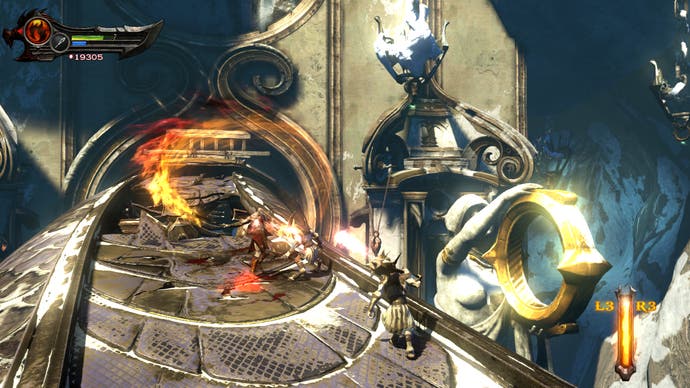
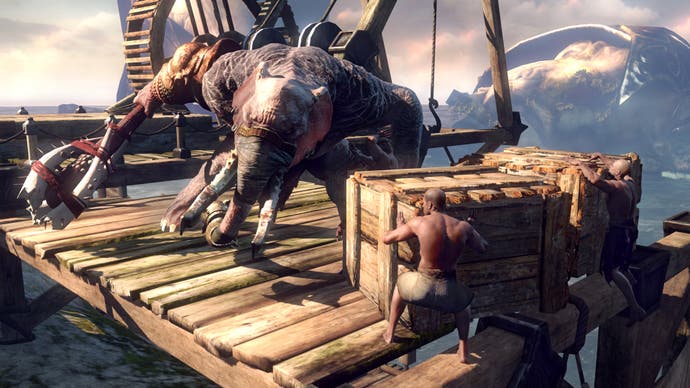
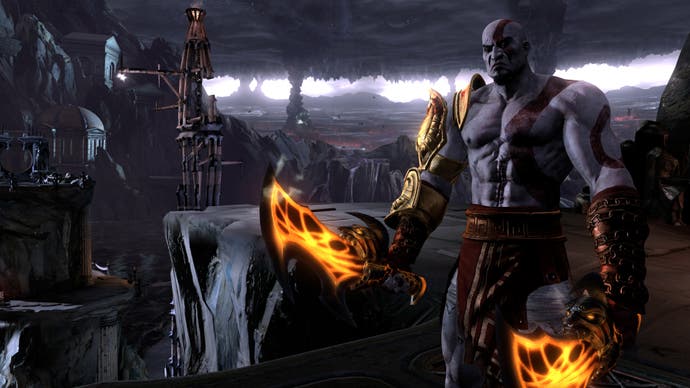
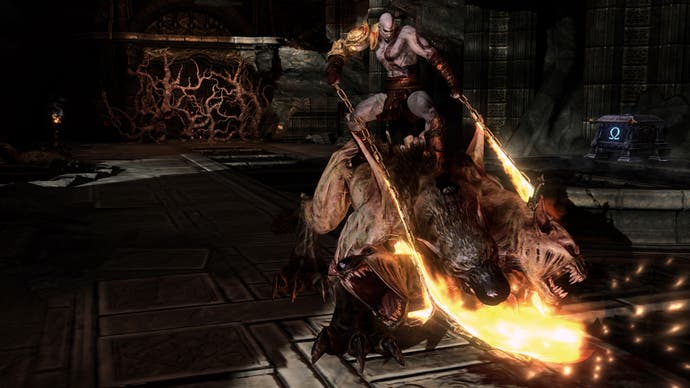
The last time we spoke to Sony Santa Monica, we asked the tech team about the viability of porting PS3 games to the new console. The Last of Us, Uncharted and God of War were all designed with the strengths of the PS3 in mind - in particular getting the most out of the SPU co-processors that are not in any way part and parcel of next-gen architecture. We had the idea that the "to the metal" approach may not work too kindly on an entirely different CPU/GPU set-up. The studio's response was enlightening:
"Our approach is not really 'to the metal'," graphics engineer Ben Diamand told us. "It never really has been, and people are surprised every time we say this. Yes, we optimise, sometimes a lot, but we try to be smart about when and where. As for God of War and PS4, I couldn't possibly comment on anything 'future'..."
"It could be done," graphics engineer Cedric Perthuis added. "The PS4 hardware is such a big leap forward in terms of graphics power compared to the PS3 that we probably wouldn't need to go that far. Most if not all of the SPU techniques we developed and used on PS3 were there to reduce the RSX workload. With the PS4 GPU we probably wouldn't need those techniques."
There have been no official announcements yet, but we feel strangely confident that we will be seeing the best of the PlayStation 3 and Xbox 360 exclusives retooled for their successors across the coming months and years - and if The Last of Us is the first, we can't wait to see how it will turn out. A brilliant game on PlayStation 3 will be made even better on its successor but inevitably, controversy will follow.
Some will baulk at the price-tags these remasters may command. Others will demand that the resources involved should be deployed on creating new games, not recreating old ones. In both cases, the market - the gamers - will decide what happens next. If the games are too expensive, expect to see them go on sale quickly. And if they don't sell at all, expect any renewed remastering fad to fizzle out very quickly. We hope that doesn't happen - there's still the small matter of a fully remastered Crysis Trilogy based on the latest CryEngine for a certain Frankfurt-based developer to attend to...
